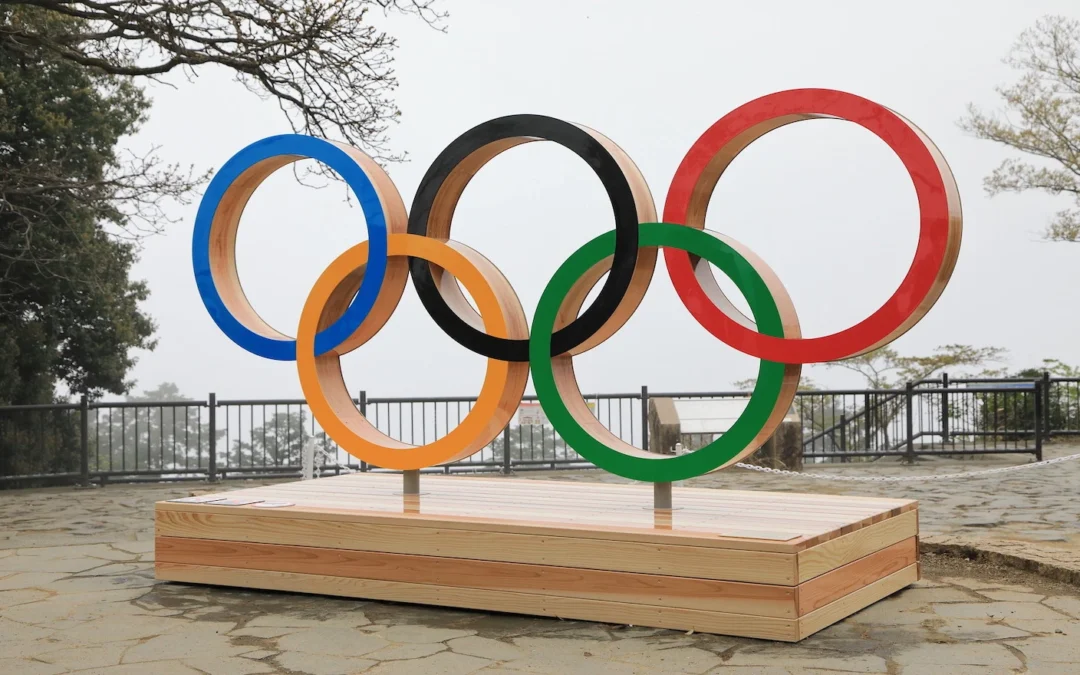Article initially published in The Hill on July 6, 2021 and written by Lisa M. Brosseau, SCD and Annie Sparrow M.D.
With the Olympics less than three weeks away, time is running out, but there are still important precautions that could be implemented to avoid a worst-case COVID-19 “superspreader” scenario. Yet, the International Olympic Committee (IOC) continues to give at best cavalier attention to the problem of viral transmission.
When the IOC made the decision to postpone the Olympics in March 2020, there were fewer than 350,000 COVID-19 cases in the entire world. Today, more than that number (some 370,000) are infected each day. In March 2020, COVID-19 had killed fewer than 15,000 people. Last week, COVID-19 killed at least 57,000 people — and that was the lowest weekly death toll since November 2020. Efforts to combat the pandemic remain precarious, with COVID-19 cases increasing in much of the world.
We recently published an article in the New England Journal of Medicineidentifying several areas where the IOC’s COVID protocols, known as Playbooks 1 and 2, fell short. Since then, despite the publication of a third and final playbook, we have seen no measurable progress.
The IOC has repeatedly invoked the mantra that 80 percent of those in the Olympic Village will be vaccinated. But that will not be true of the many volunteers, workers and spectators in poorly vaccinated Japan. Nor will it be enough.
Moreover, the IOC says nothing about the variability in vaccine effectiveness. Several countries that rely mainly on China’s Sinopharm vaccine have experienced recent surges in infections, probably due to the ability of the highly transmissible Delta variant, which has become dominant in many countries, to evade the vaccine. Separately, a Ugandan athlete and coach tested positive for COVID-19 upon entry into Japan, both fully vaccinated with the Astrazeneca vaccine.
Although one would think that the IOC would be particularly sensitive to differences among sports, its risk assessments fail to distinguish among competitions. One-on-one competitions involving close conduct and conducted indoors carry a much higher risk than single competitor events.
Wrestling is riskier than weightlifting; boxing is riskier than badminton. Thomas Bach, Ph.D., IOC president and gold medalist in fencing, should understand that fencers have a much higher risk of spreading COVID-19 than track-and-field athletes.
All Gold medals may be valued the same, but all Olympic events do not pose the same risk of Covid-19 transmission. Yet the International @Olympics Committee is treating all sports the same, endangering the athletes in the riskier competitions. Here’s a risk-assessment table: pic.twitter.com/C5ocjQabRz
— Annie Sparrow (@annie_sparrow) July 6, 2021
The risk of transmission increases with the number of potential sources, the quantity and closeness of contacts and the time spent in a shared space. It also varies by the nature of different sports.
At least daily testing of everyone in the medium- and high-risk categories could help to decrease the chance of infectious people being present. To make this work, however, the IOC would need to include everyone in these categories – including the officials, workers and volunteers. Instead, the IOC is doing only doing daily testing on athletes whom it deems at risk — without explanation of “at risk.” Daily testing only works if the test is specific and sensitive and if the results are available quickly — within a few hours. Even with those caveats, testing cannot be relied upon to pick up every possible infected person in a timely manner.
What the IOC recommends is based on a now-superseded understanding of how COVID spreads — as if it is transmitted only by large droplets that fall to earth quickly rather than small particles that linger and spread in the air. So, the IOC recommends:
- Face coverings, even though they do not limit emission or inhalation of small infectious particles
- Plexiglas barriers, even though they do not stop the dispersion of small infectious particles
- Opening a window every 30 minutes, which is hardly sufficient to lower the concentration of infectious particles in dorm or dining rooms
Notably, air conditioning is not ventilation.
Making air colder and moving it around a room is not the same as exchanging new air with old. Rather, it simply distributes an increasing particle concentration throughout a space, which could ensure that everyone in that space inhales an infectious dose (as demonstrated early in the pandemic during the now infamous Guanghzou restaurant outbreak).
Stadiums control both spectators and athletes by channeling them through small corridors. Tunnels and corridors, including hotel hallways, are risky places of high density but low ventilation.
An urgent risk assessment and review of all environments where athletes, support staff, workers and spectators will congregate is needed to minimize the risk of exposure.
To help the IOC with the basic precautionary steps that it seems unable to take on its own, we pose the following questions:
- What is the response plan if there is an outbreak of COVID-19 during the games?
- Why isn’t daily testing being conducted on everyone with potential for close contacts, using PCR-based testing?
- Will there be genomic testing to better understand who infected whom, and to prepare countries as athletes return?
- What has been done to evaluate the quality of ventilation in all venues and locations throughout the Olympic Village and venues?
- What has been done to implement air filtration in all venues and locations throughout the Olympic Village and indoor venues in all areas where ventilation is inadequate?
- Are there enough resources in the Olympic Village to manage a large outbreak?
- How will a readily available supply of approved masks be obtained and distributed to athletes?
- Will workers and others required to spend lots of time in close contact with many people be provided with fit-tested respirators, to ensure that they are adequately protected from an infectious dose?
- How is the IOC updating the Olympic Village and venues in light of the new variants — especially the Delta variant?
- What steps are being taken to ensure the preparation and delivery of the Games does not compromise the public health situation in Japan, including the diversion of essential resources and medical personnel?
- How and from where and how will the required resources and medical personnel be sourced to ensure the games protect public and athlete health?
- What medical facilities have been secured in Tokyo for athletes and others who test positive for COVID-19 and display critical symptoms, including the need for hospitalization?
- What measures are the IOC putting in place to ensure that athletes do not unwittingly take the virus or variants home to unprotected, unvaccinated populations?
Best case scenario: The Olympics happen safely, a cause for great global celebration.
Worst case scenario: Tokyo2020 becomes a global mega-spreader event, setting a world record for pandemic acceleration.
What happens in Tokyo won’t stay in Tokyo. For better or worse, the Olympics will affect all of us. The IOC needs to get its corporate act together for the sake of the public and global consequences.
Lisa M. Brosseau, ScD, is a retired professor from the University of Illinois with expertise in industrial hygiene, aerosol transmissible infectious diseases and respiratory protection. She is a research consultant with the Center for Infectious Disease Research and Policy and has provided education and technical assistance throughout the pandemic to a wide range of organizations, unions, and individuals. Follow Brosseau on Twitter: @brosseau_lisa.
Annie Sparrow, M.D., is a pediatrician, public health specialist and assistant professor in Population Health Science and Policy at the Icahn School of Medicine at Mount Sinai Hospital in New York. Follow Sparrow at @annie_sparrow.
Read the full article on thehill.com


Recent Comments